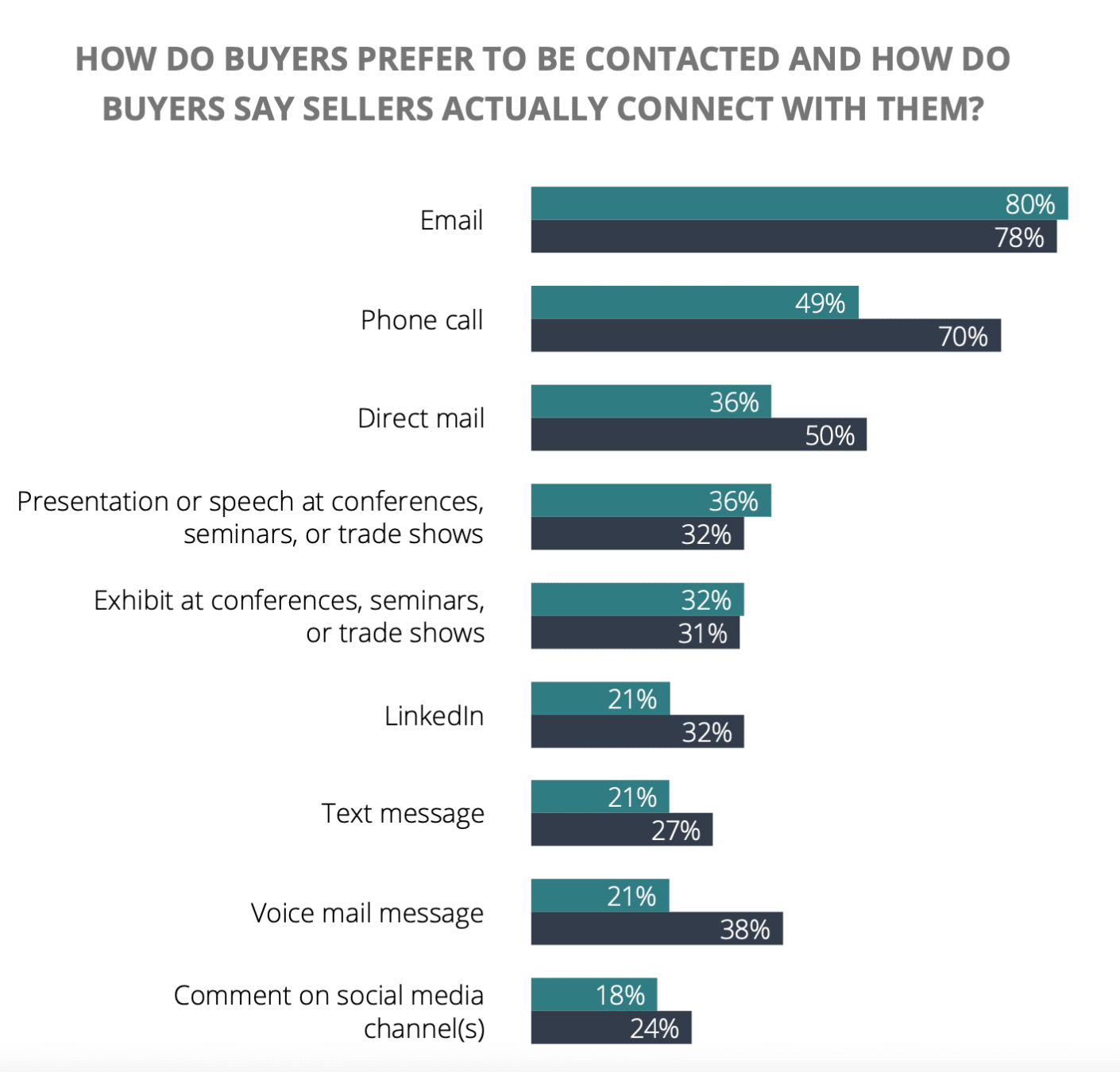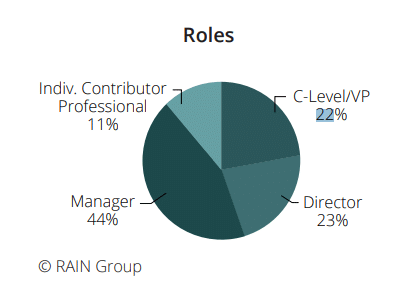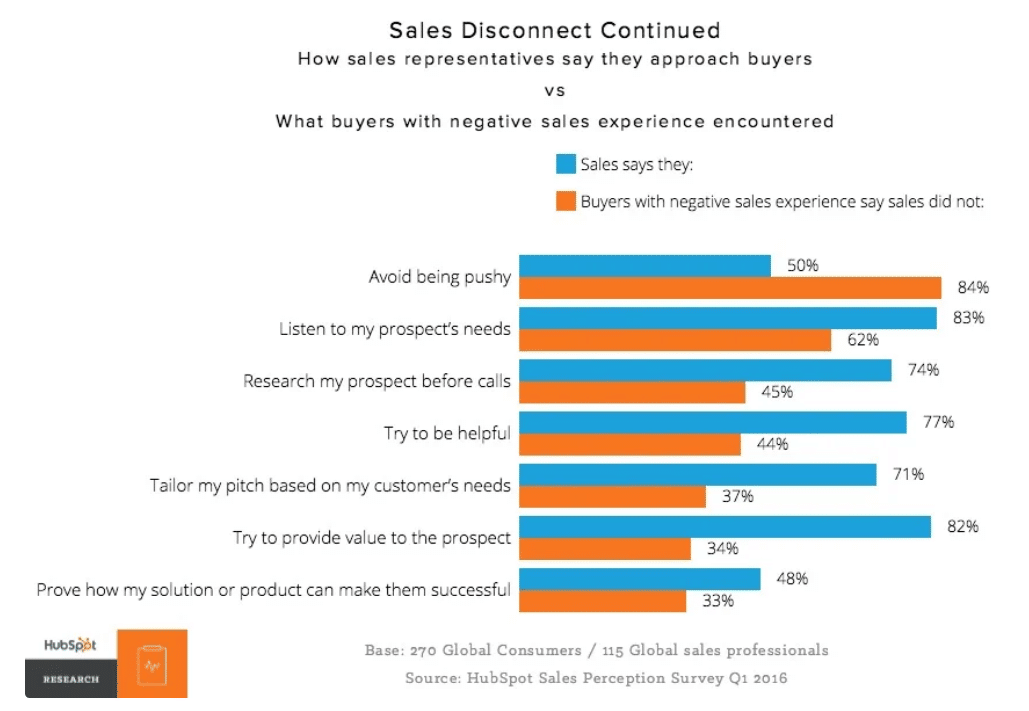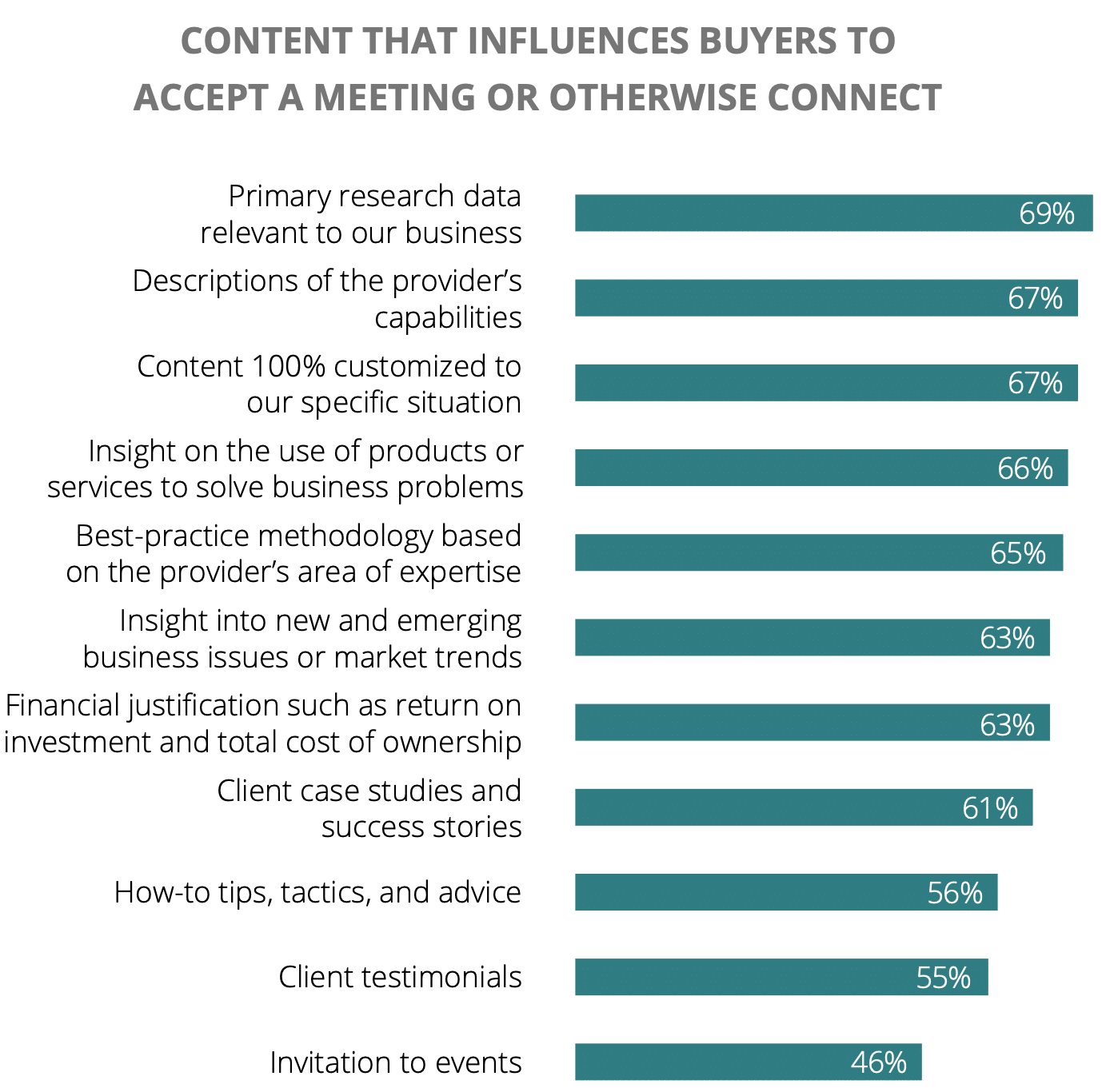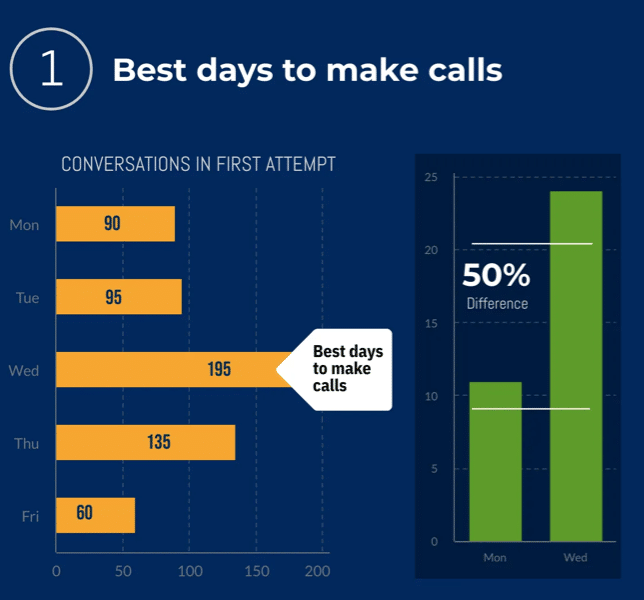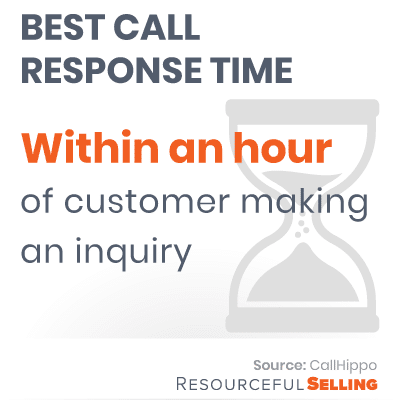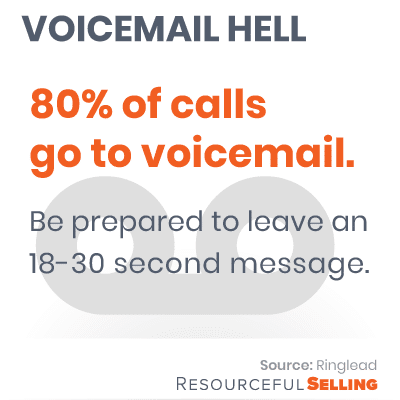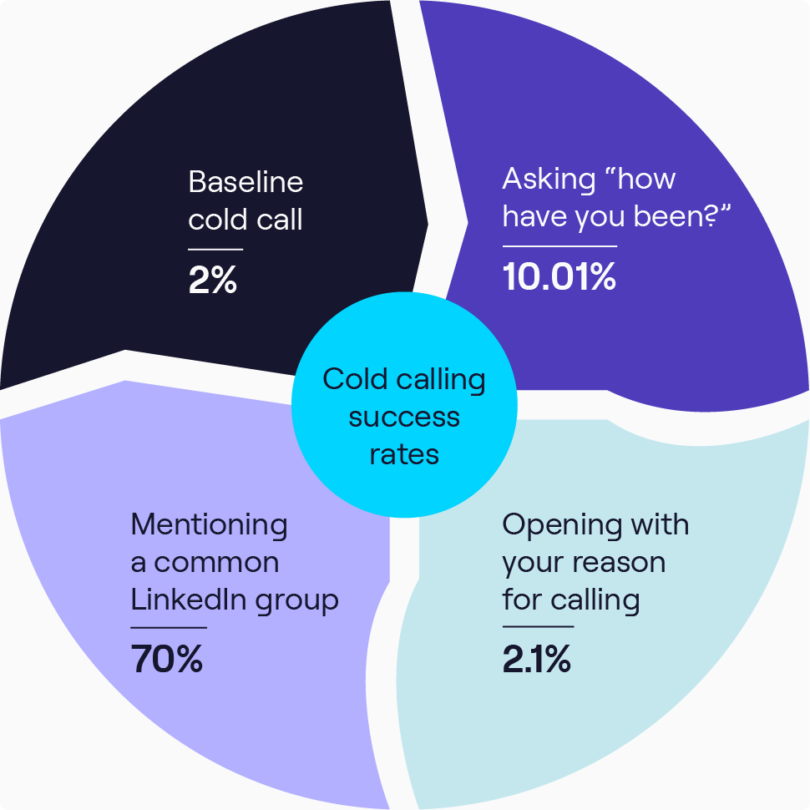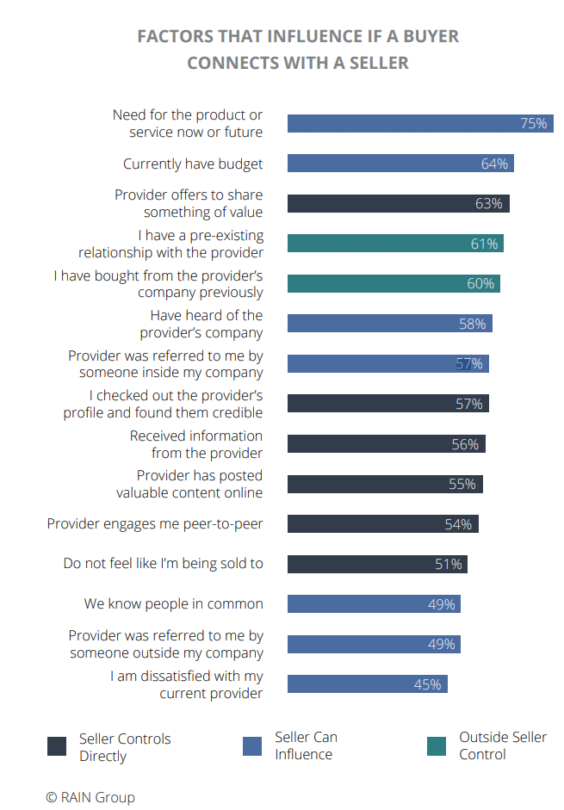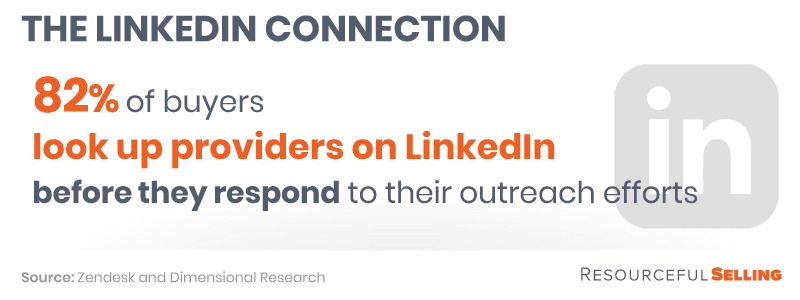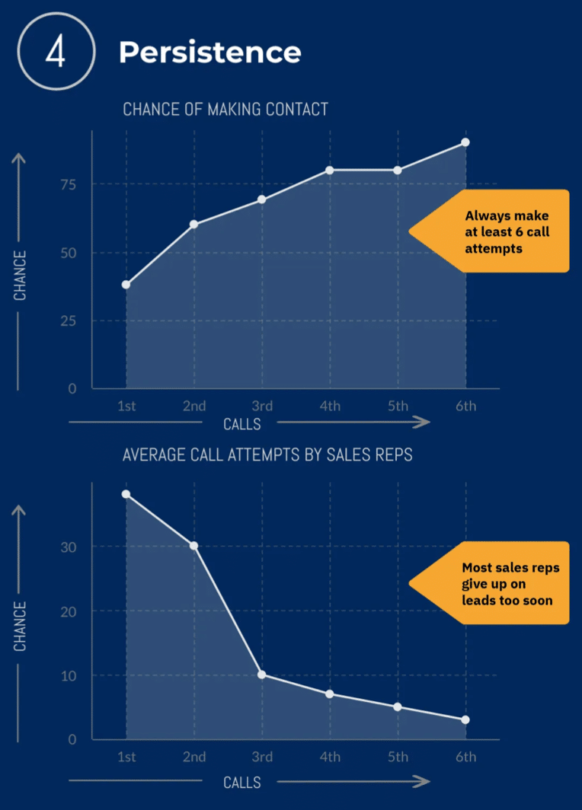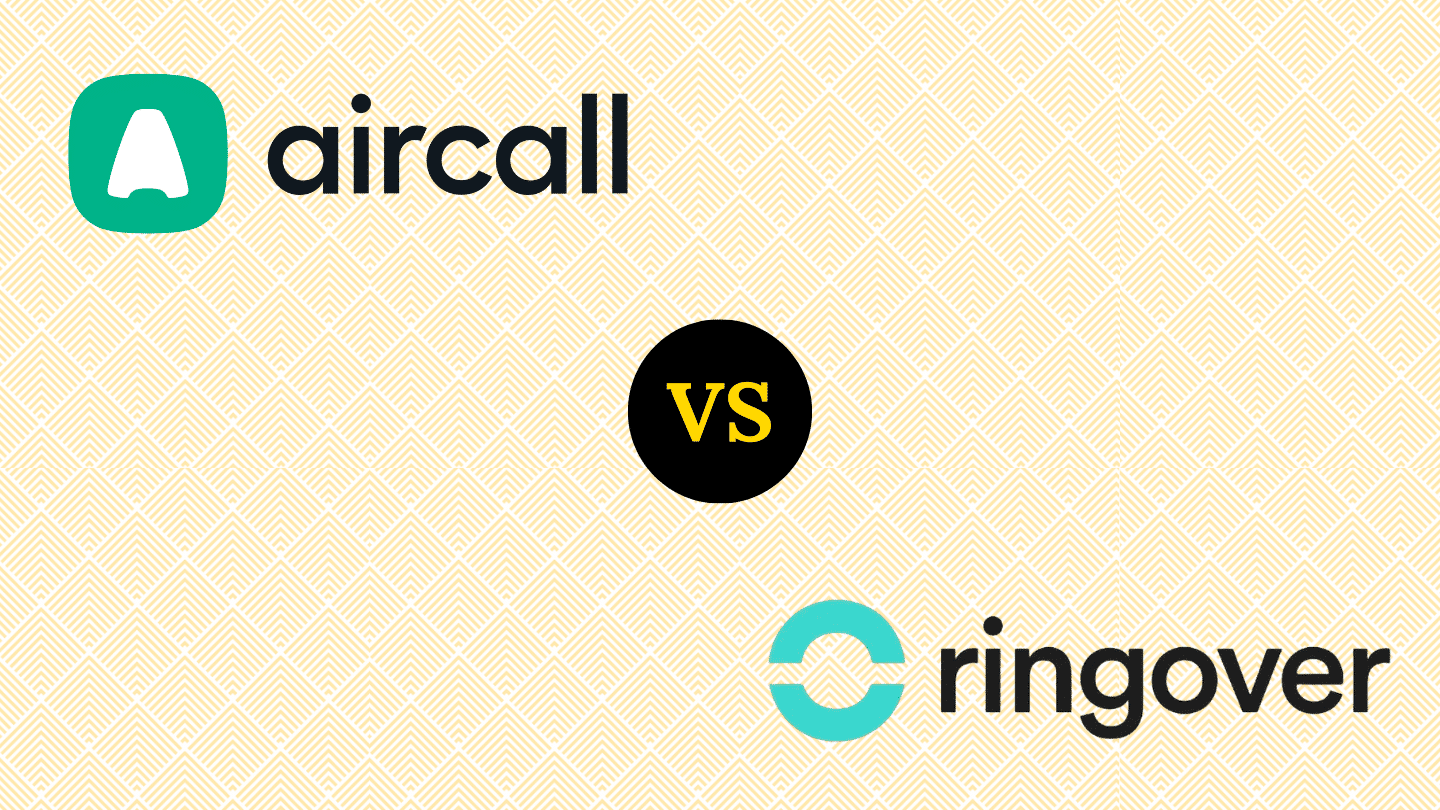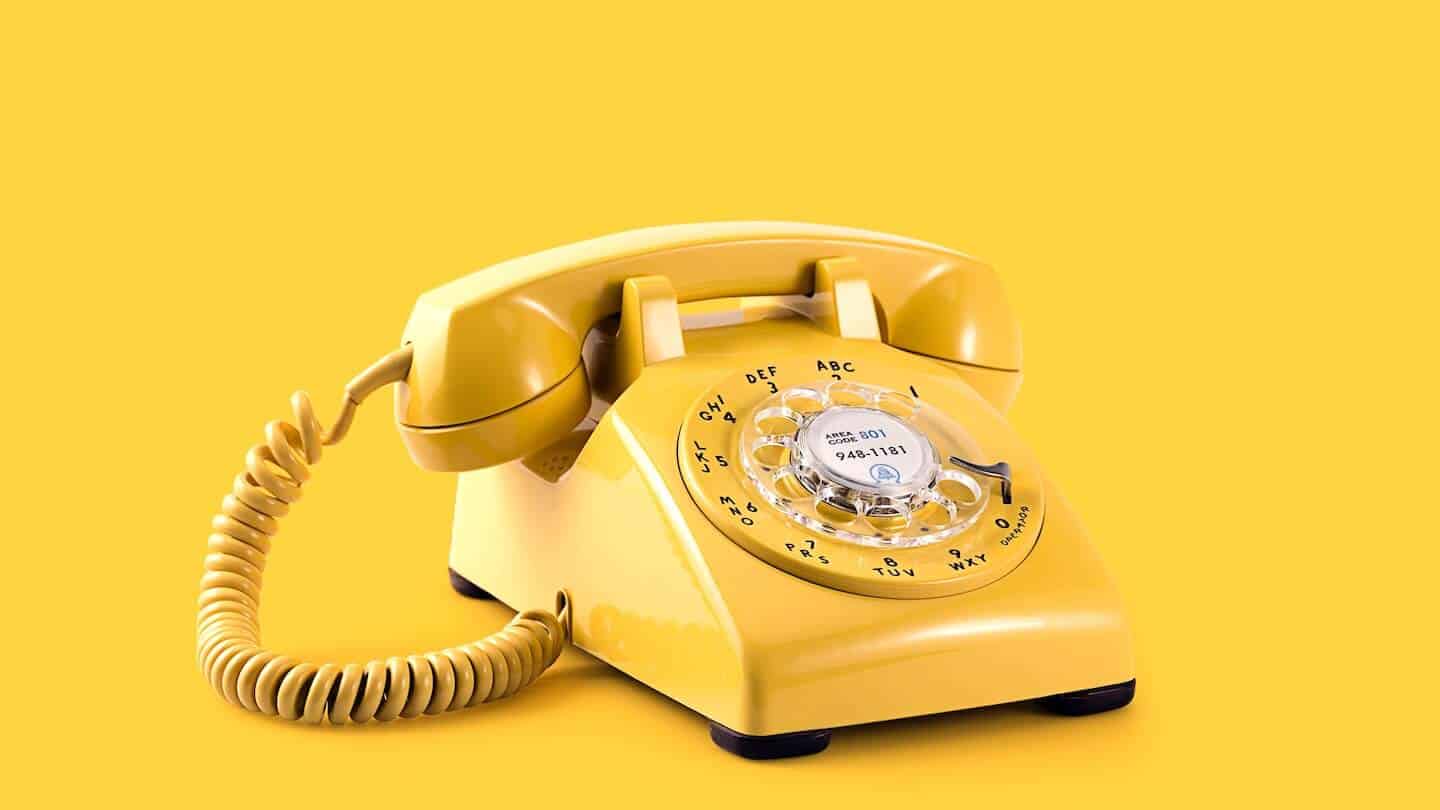In this article, we drew on a number of studies, including one by Rain Group that has been widely quoted in many of the articles we source.
Contrary to what many people think, telephone canvassing is not dead: e-mails may be today’s number 1 sales medium, but the telephone is still necessary and appreciated by buyers.
The aim is to identify the situations and methods in which telephone prospecting remains effective.
Sommaire
#1 The telephone remains the 2nd preferred channel for B2B buyers
According to a study by the Rain Group on prospects’ preferred means of contact, the telephone is still the second most popular method for buyers, after e-mail.
- Of the 15 most effective methods in the study, the use of the telephone accounts for 3 of the 5 most important statistics (telephone calls to existing customers, to former customers and to new contacts).
#2 57% of C-level and VP buyers prefer the phone to e-mail
Again according to Rain Group,
- 57% of C-level buyers and vice-presidents, regardless of sector, prefer calls. This is more than directors (51%) and managers (47%).
- According to the graph below, C-level and VP buyers are responsible for 22% of sales.
If we look at the type of content they are interested in,
- 75% are likely to be prompted to book an appointment or connect in some other way by ROI cases. For managers, this figure drops to 64% and 59% for directors.
- The same goes for customized content written for them, which convinces 75% of C-level and VP buyers, compared with 71% of directors and 63% of managers.
#3 69% of buyers have accepted a call from a new supplier in the last 12 months
According to a study by sales experts Ressourceful Selling, 69% of buyers say they have accepted calls from new suppliers in the past year.
AndRain’s study makes this statistic even more precise: 82% of buyers say they agree to meet the sellers who contact them.
While many prospects prefer to be contacted by e-mail, calls still work, provided the right sales techniques are in place.
Going further
- 9 tips for successful telephone prospecting.
- Telephone call plan: method and examples
- Sample call and sales scripts
#4 Only 37% of prospects feel that the salespeople who called them gave them information that matched their needs.
According to a Hubspot survey, summarized in the following graph, 37% of prospects who have had a bad sales experience say that the salesperson didn’t provide them with relevant information tailored to their needs.
- And 53% of sales meetings don’t add value for the customer.
However, Rain ‘s graph below on the content of a prospecting call most likely to convince a buyer shows that:
- 67% of buyers are ready to accept an appointment if the salesperson’s pitch is 100% personalized
- 66% if the call provides them with an insight into how to use the product or service and how it can solve their problems.
- 63% if the call provides them with information on new or emerging market trends.
It’s therefore essential to tailor your content 100% to the prospect’s sector and specific needs, so as not to deliver a generic pitch.
Providing prospects with new information about their sector allows you to :
- Grab and hold his attention
- Show that you can really add value: you have expertise and offer a product that really meets the needs of your sector.
#5 46% more conversions on Wednesdays
According to a Call Hippo study on the best days and times to make prospecting calls, calling on Wednesdays results in 46% more conversions than on other days of the week.
- Mondays are the busiest days, and a bad time.
- Between 4 and 5 p.m., then from 11 to 12 a.m.: these are the best times for your prospecting calls.
- According to Resourceful Selling, a call will be all the more effective if it is made within 60 minutes of the prospect making contact (downloading a document from your website, sending an e-mail to ask a question, making a call, etc.).
Going further
- Draw up a commercial discovery plan for telephone prospecting.
- Find out more about call tracking.
- Comparison of call centers to outsource your telephone prospecting.
#6 71% of buyers prefer sellers to contact them at the beginning of the buying process
Rain’s study shows that buyers prefer to be contacted early in their purchasing process, when they are looking for new ideas to improve their bottom line.
This is the time when buyers are both actively doing their own research, but also want to be offered new solutions, right from the start of the buying process: take this into account to make your discovery calls a success.
#7 80% of calls go to voicemail
According to Resourceful Selling, whose study is based on Ringlead’s, the conclusion is clear: you have very little chance of getting your prospect on the phone. 80% of calls go to voicemail.
That’s why it’s important to take care with your voice message:
- Prospects listen for no more than 30 seconds to a cold call message, according to a study by Inside Sales.
- Each additional second used beyond your 30 seconds reduces the chances of making contact with customers by 2%.
#8 The success rate of a call rises to 70% if you mention a mutual acquaintance on LinkedIn
According to Cognism, mentioning a mutual acquaintance on LinkedIn is one of the main factors in the success of a prospecting call. This applies to LinkedIn, but also to any other way of showing shared relationships.
The graph below shows that among the success factors of a prospecting call, mentioning a common LinkedIn group accounts for 70%.
Rain’s graph complements these figures by showing that among the factors influencing the matchmaking between a buyer and a seller,
- 57% of respondents mention a supplier recommendation from someone in their company
- 49% emphasize having relationships in common.
The more people you know, the more likely you are to develop joint relationships.
#9 82% of buyers check the seller’s profile on LinkedIn
It’s common knowledge that many buyers check the reputation of the company selling online before buying.
- 82% of buyers believe that a company is more trustworthy if it is active on social networks, according to a study by BrandFog, reported by Resourceful Selling.
- 90% of buyers say that positive online feedback influences their purchasing decision, according to a Zendesk survey.
Among social networks, LinkedIn occupies a prime position: again according toRain’s study, 61% of buyers who frequently accept appointments with salespeople have checked their profile on LinkedIn as a first step.
The salesperson’s profile on professional networks such as LinkedIn is very important. It must :
- Enable the buyer to quickly and clearly identify what the seller is selling
- Highlight the seller’s seriousness
- And it’s even better if the prospect finds common relations (cf. our point #8).
#10 6 calls are needed on average to have a chance of getting in touch with a prospect
The graph below from CallHippo shows that it will take you an average of 6 calls to have a chance of making contact with a prospect.
- Although follow-ups are key to converting a prospect, only 30% of first calls are followed up.
- The more you insist, the more you’ll stand out, because statistically, 2/3 of your competitors won’t do it.
Going further
- The best training courses in telephone prospecting.
- How do you qualify a prospect over the phone?
- Integrate telephone prospecting into your sales prospecting plan.
- Top 10 phoning software.

